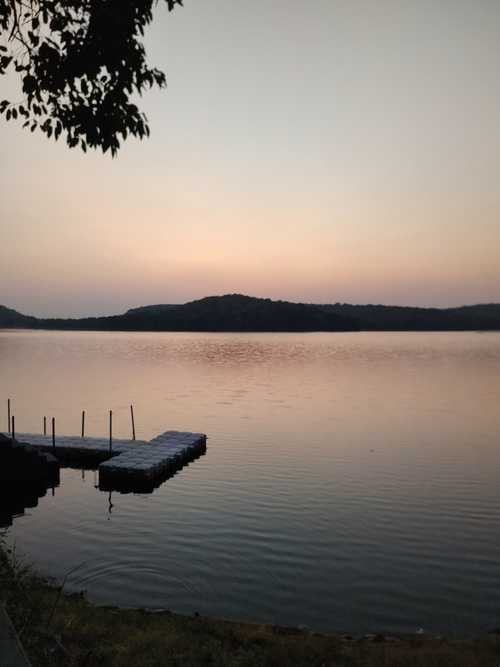
Soundscapes of ‘Lesser’ Nature (part two)
Soundscapes of Lesser Nature is a soundscape ecology research project that focuses on deep listening as a visceral way to understand the relationship between humans and nature. The project is being pursued as part of the earth.fm Grants program for soundscape studies, 2023.
‘Lesser nature’ refers to the ecology of human settlements in and around environmentally sensitive areas. The project hypothesizes that the soundscapes of these spaces can provide fresh insight into the conflicts and cooperation of human-nature dynamics in India – in more experiential way than through studying nature reserves’ sanitized enclosures.
The project also attempts to understand the paradox of considering humanity as detached from nature, and of finding the remnants of ‘pristine, untouched, and exotic nature’ in order to preserve them – and ultimately the consumerism and commercialization underpinning this.
Field trips 2 & 3: The Dhauladhar Mountain Range in the Himalayas, and Chidikho Wildlife Sanctuary, Madhya Pradesh
Listening to nature can be about listening to the fundamentals: time and space. Or rather, listening to the overlaps of natural and human-made worlds through the human experience of time and space. A soundscape can be observed as a process which has been set in motion, just like any other process in the natural world. It can follow a natural cause-effect cycle throughout its existence. And while it transitions from a perceivable form to become formless, from its beginning to its end, the decay can be harnessed and preserved into experiences exclusive to the dynamics of the human-nature relationship. Listening to nature, thus, can become a tool to strengthen the human-nature relationship itself, by navigating sonic dimensions that have spatial and temporal values rooted in coexistence. Listening to time and space in nature can be about listening to coexistence.
After my first field trip in the Western Ghats of South India, under earth.fm’s Grants program, I undertook two further field trips which explored different biomes. These took place during October-November 2023, in Chidikho Wildlife Sanctuary, Madhya Pradesh, Central India, and in and around Bir village, Himachal Pradesh, in the Dhauladhar Ranges of the Himalayas, North India. On these trips, I chose to explore the soundscapes of the oncoming winter. The recordings were therefore made just a few weeks before the winter fully set in in the Indian Himalayan Region and significant amounts of North, West, East, and Central India. I wanted to record the transition from the lush yet fading greenery of the recently concluded monsoon season into the cold, barren textures of winter. This would be done while listening primarily to winds and waves around the deciduous forests of Central India and the subtropical alpine forests of the Dhauladhar Range.
Set in motion
Mid-November 2023: Between the village of Kotli and the Billing region, the biome shows a mosaic of characteristics: from tropical to tundra, and in-between. The ridge lines of the Billing forest are among the highest in this part of Dhauladhar. For as far as the view is clear, the geography of the settlements is visible down in the valleys around these peaks.
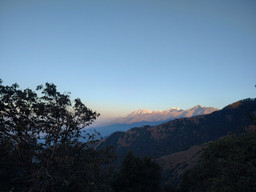
Recording in Billing Forest between 4 and 7 am revealed valuable insights. A sparse dawn chorus indicated that the migration of birds toward warmer climes had begun. The majority of soundscapes recorded here consisted of amplified sounds of wind and rivulets running through the valleys. Recording a stream, Awa Khadd, where the sound of water was uninterrupted by any birds or animals, emphasized their absence, while dawn soundscapes from Billing Forest and Kulani village recorded the sound of silence, due to the upcoming winter season.
A descent took me to Machiyal, a small temple location along another mountain rivulet in Dhauladhar. A dusk chorus at the lower altitude Chhota Machiyal, where birds were still in the process of migrating to even lower altitudes, documented the calls of slightly higher numbers of birds.
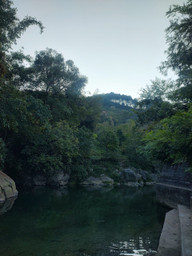
Cause and effect
Late October 2023 in Chidikho Wildlife Sanctuary, a complex biome combining deciduous forests with the characteristics of a grassland ecosystem. The sanctuary protects and preserves fauna ranging from rare predators such as leopards and hyenas to less endangered but still vulnerable animals like wild boars, sambar deer, cheetahs, and nilgai antelopes.
Chidkho is also home to birds like paradise flycatchers and wild peacocks. Migratory birds are also found here, most of which have traveled from the Northern Himalayas to the relatively warm climates of Central and Western India. Of course, birds’ migration is not limited by national boundaries; as the winter intensifies throughout the Northern Hemisphere, birds from as far afield as the Arctic Circle can be found in the lakes of Central India, including in Chidikho. Chidikho derives its name from the Hindi word for bird, ‘chidiya’, because the sanctuary includes a lake that has a bird-like shape when seen from above.
I arrived here late in the evening, when the last batch of tourists were producing photographic memories of Chidikho Lake turning golden-orange with the setting sun: selfies, group photos, landscape shots, and pictures of relatively friendly animals like deer.
Due to the Indian government’s ecotourism policy, Chidikho is only open to tourists from early morning till sunset. As they left, an uncanny soundscape emerged, of small insects on the surface of the lake being hunted by the fish in the water below. This soundscape provided the ambient sound for the whole night that I spent in the sanctuary.
Recording a midnight ambiance in Chidikho realized a rather abstract spatial idea. My audio equipment was stationed at a small lake in the center of the forest: the only source of water for the forest’s wildlife, and also the home of over a dozen crocodiles.
Combined with the hills which surround it it, this body of water creates an acoustic enclosure where sounds from throughout the forest collide. This effect also coincides with the movement of birds and animals in a habitat where predator-prey dynamics are profound (and sensational to an observer like me) – yet I couldn’t see the shape and form of these dynamics, only hear them.
On a closer listen, what appeared to be a quiet and sparse soundscape revealed multiple layers of sounds, expanding my perception of a space which was otherwise invisible in the pitch-black darkness. Foregrounded by the sounds of smaller insects, and fish splashing in the lake, spatial depth was revealed by every bird or animal call. These calls sometimes also created auditory illusions. It felt as if stories were unfolding through sound and in space: stories of the elusive leopards and their nocturnal hunts. These sounds became a guessing game: which movement might lead to me witnessing one of the world’s most feared predators hunting in its natural habitat?
This story was only occasionally interrupted by the sounds of a flight passing by, and religious processions taking place in a town several kilometers away. And sometimes, when the langur monkeys moved chaotically above me, and urinated and defecated from the top of the trees, they created a collision between the dreaminess and the reality of this particular experience of acoustic ecology.
The morning ambiance was a different story altogether. The spatial mystery of the forest diminished as sunlight illuminated the landscape. A chaotic soundscape of birds filled the environs of the lake, where they stayed busy until a batch of tourists arrived, making the wildlife recede deeper into its sanctuary.
Preserving decay
Listening to time and space in nature can also be about listening to our imagination. It can be about paying attention to the symbols and metaphors of nature, and the way nature is replicated in human-made forms; the overlaps in which the medium of sound exists, between the natural and human-made worlds. It can also be about the way that music and poetry are derived from close association with nature, and the ways we understand certain dimensions of reality, and compose relevant meaning out of it.
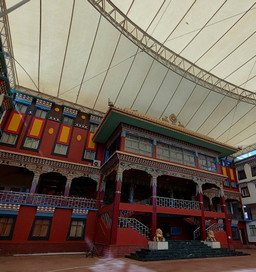
Sherabling Buddhist Monastery is located in an isolated pine forest near the village of Bir. This year, an annual seven-day prayer occurred here in November. It consisted of vocal hymns layered with a horn section harmonizing across higher and lower frequencies of sound, plus large membrane drums and several other instruments of varying textures. While praying, the monks use different elements – sound being one of them – as an offering to the divine, which they consider to be a formless entity. The composition, both in terms of instrumentation and arrangement, and its structure, is a result of listening deeply to nature. Despite the monastery’s location in contemporary India, this practice is ingrained in Tibetan culture, the roots of which derive from multi-sensory human observation of the sparse Tibetan landscape, abundant with amplified geological silence of high-altitude mountains, in the sonic sense. This sonic ensemble as prayer also uses the vibrational nature of sound to disperse itself throughout the forest like pollen and let the wind carry it as far as it can.
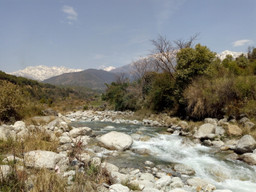
The prayers, performed twice a day for seven days, break the monotony of the winter soundscape of the subtropical pine forest of the Dhauladhar Range. They compliment the stillness of time and space in the location, and create a generative experience, dependent on how far and for how long these prayers will be listened to: a formless experience of time and space, articulated by sound.
Listening to a village child living in a different part of the Dhauladhar can expand this idea further. He is singing a folk song, about day-to-day lives and livelihoods, addressed to a laal chidiya or red mountain bird. Though the song is specific to this mountainous landscape, it also reminds me of other examples from across the human-made boundaries of different languages and cultures. Differences which, in some ways, are divided by our perception of time and space, while in other ways being unified by the formless experience of them which we all share. Like the concept of Jugni, in Sufism: by keeping Jugni, a term for the soul, at their center, folk poetry and music can be created to address themes in nature and beyond. It is like the metaphor of the red bird – but a little more formless.

Bhaskar is one of five recipients of the earth.fm Grants field recording program, and will be sharing his journey, research, and encounters on the site’s blog. His focus is on the relationships and dynamics between humans and the more-than-human world, the paradox of protected natural areas, and delusions about ‘exotic’ nature within the world of conservation.
🎧 Listen to Bhaskar’s recordings on earth.fm
Featured photo (Chidikho Lake) by A Bhaskar Rao
All photos and recordings courtesy of A Bhaskar Rao
Earth.fm is a completely free streaming service of 1000+ nature sounds from around the world, offering natural soundscapes and guided meditations for people who wish to listen to nature, relax, and become more connected. Launched in 2022, Earth.fm is a non-profit and a 1% for the Planet Environmental Partner.
Check out our recordings of nature ambience from sound recordists and artists spanning the globe, our thematic playlists of immersive soundscapes and our Wind Is the Original Radio podcast.
You can join the Earth.fm family by signing up for our newsletter of weekly inspiration for your precious ears, or become a member to enjoy the extra Earth.fm features and goodies and support us on our mission.
Subscription fees contribute to growing our library of authentic nature sounds, research into topics like noise pollution and the connection between nature and mental wellbeing, as well as funding grants that support emerging nature sound recordists from underprivileged communities.
